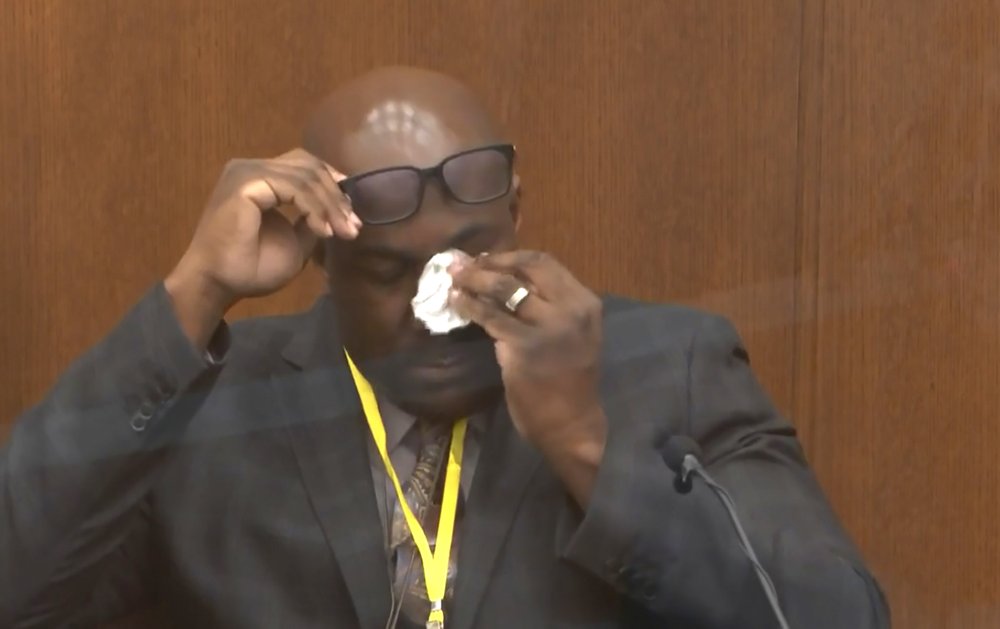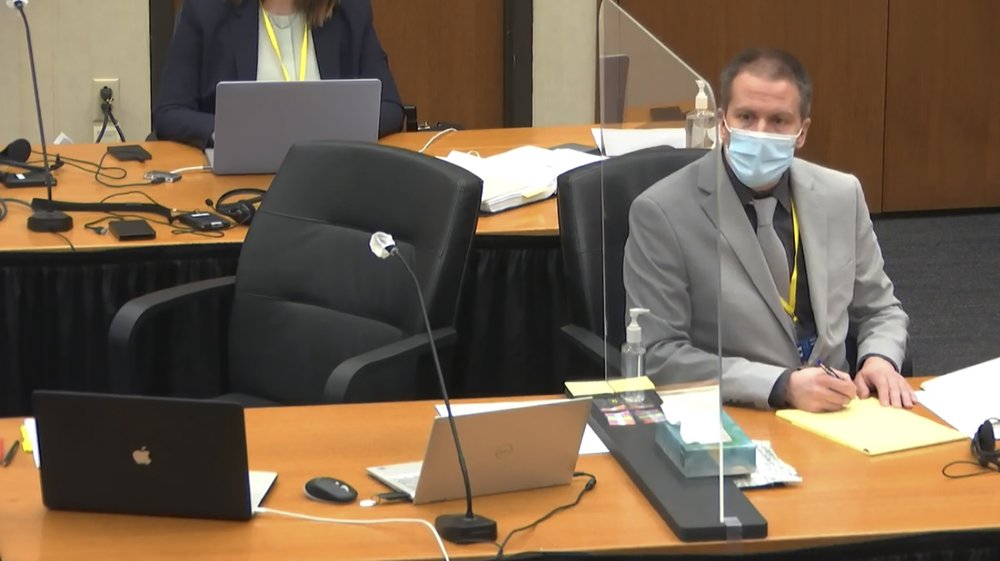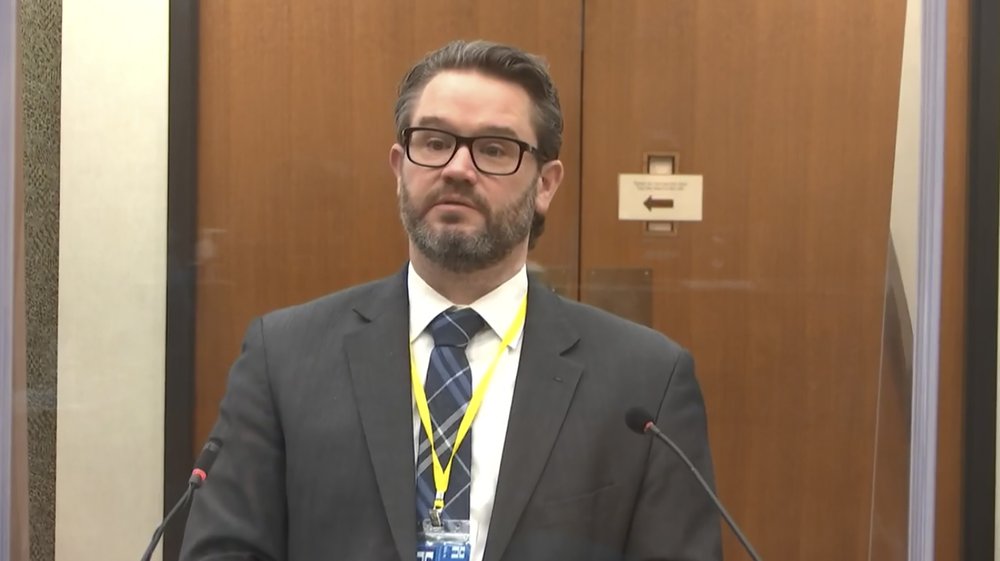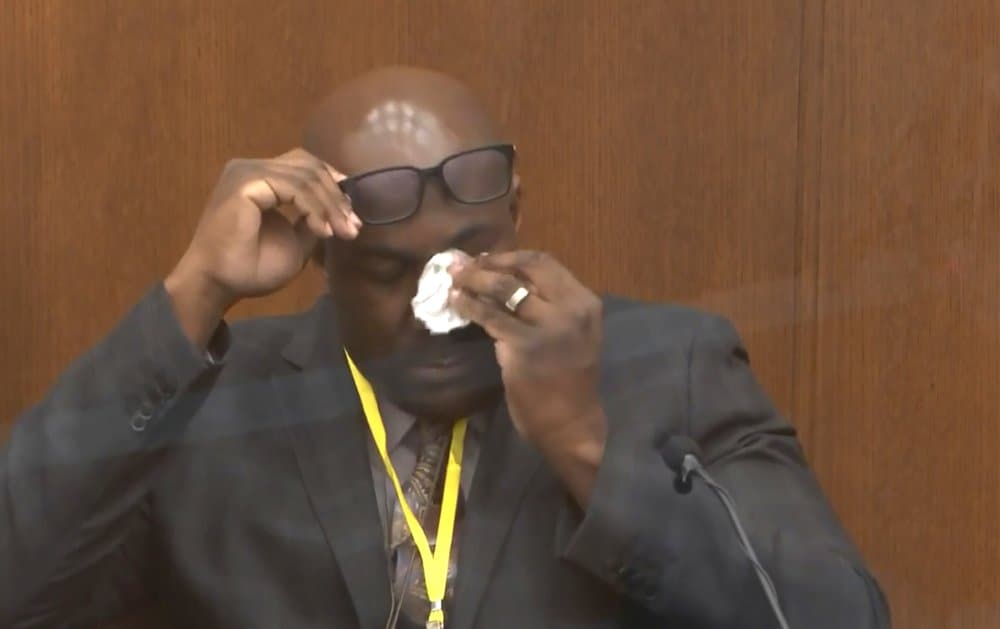George Floyd’s brother sheds tears on the stand
Philonise Floyd began crying after he was shown a picture of his late mother and George as a child
George Floyd’s younger brother took the witness stand Monday and lovingly recalled how George used to make the best banana mayonnaise sandwiches, how George drilled him in catching a football, and the way George used to mark his height on the wall as a boy because he wanted to grow taller.
Philonise Floyd, 39, shed tears as he was shown a picture of his late mother and a young George.
“That’s my oldest brother George. I miss both of them,” he testified at the murder trial of former Minneapolis police Officer Derek Chauvin, accused of killing George Floyd by putting his knee on the 46-year-old Black man’s neck during an arrest last May.
Philonise Floyd took the stand as part of an effort by prosecutors to humanize his brother in front of the jury and make him more than a crime statistic. Minnesota is a rarity in allowing “spark of life” testimony during the trial stage.
Philonise Floyd described growing up in a poor area of Houston with George and their other siblings.
Read More: Medical examiner blames police pressure for Floyd’s death

“He used to make the best banana mayonnaise sandwiches. And he used to make the best syrup sandwiches because George couldn’t cook, he couldn’t boil water,” he said.
He said Floyd also played football and purposely threw the ball at different angles so Philonise would have to practice diving for it. “I always thought my brother couldn’t throw. But he never intended to throw the ball to me,” he said, smiling.
He said that as a child, George used to mark his height on the wall, because he loved sports and wanted to grow taller. And he said his brother was someone he went to for advice.
Earlier Monday, the judge refused a defense request to immediately sequester the jury, the morning after the killing of a Black man during a traffic stop triggered unrest in a suburb just outside Minneapolis.
Chauvin attorney Eric Nelson argued that the jurors could be influenced by the prospect of what might happen as a result of their verdict.
“Ultimately, your honor, the question becomes will the jury be competent to make a decision regardless of the potential outcome of their decision,” he said.
But Judge Peter Cahill said he will not sequester the jury until next Monday, when he anticipates closing arguments will begin. He also denied a defense request to question jurors about what they might have seen about unrest following Sunday’s police shooting of 20-year-old Daunte Wright in Brooklyn Center.
In the wake of the shooting, hundreds of protesters broke into about 20 businesses at a shopping center, jumped on police cars and hurled rocks and other objects at officers in Brooklyn Center, about 10 miles from the heavily fortified Minneapolis courthouse. Police in riot gear fired gas and flash-bang grenades.

The Brooklyn Center police chief later called the shooting accidental, saying the officer who fired apparently meant to draw a Taser, not a handgun.
Prosecutor Steve Schleicher argued against sequestering the Chauvin jury, saying: “I don’t think that would be an effective remedy.” He also opposed questioning the jurors.
“World events happen,” Schleicher said. “And we can’t have every single world event that might affect somebody’s attitude or emotional state or anything be the grounds to come back and re-voir dire all the jurors.”
The judge previously told the jury to avoid the news during the trial.
The ruling came as the trial entered its third week, with the prosecution close to wrapping up its case and giving way to the start of the defense. Prosecutors built their case on searing witness accounts, experts condemning Chauvin’s use of a neck restraint, and medical authorities attributing Floyd’s death to a lack of oxygen.
When testimony resumed Monday morning, Dr. Jonathan Rich, a cardiology expert from Northwestern Memorial Hospital in Chicago, echoed earlier witnesses in saying Floyd died of low oxygen levels from the way he was held down by police.
He rejected defense theories that Floyd died of a drug overdose or a heart condition. Floyd had fentanyl and methamphetamine in his system and had high blood pressure and narrowing of the heart arteries, according to previous testimony.
“It was the truly the prone restraint and positional restraints that led to his asphyxiation,” Rich said.
In fact, the expert said, “Every indicator is that Mr. Floyd had actually an exceptionally strong heart.”
Rich said he had reviewed Floyd’s autopsy report. He said that some narrowing of the arteries is extremely common, and that Floyd had a mildly thickened or mildly enlarged heart but that that would be normal in someone with high blood pressure.

Read More: Judge refuses to sequester jury in Chauvin murder trial
Corroborating other experts’ testimony, Rich said that Floyd was “restrained in a life-threatening manner,” noting among other things that he was facedown on the ground, a knee was on his neck, his hands were cuffed behind his back and being pushed upward, and a knee was on the lower half of his body.
Rich said that as one officer noted on video that Floyd was passing out, police probably still could have saved his life if they had repositioned him so that his lungs could expand again. And once an officer noted that Floyd’s pulse had stopped, police still had a significant opportunity to save his life by administering CPR, he said.
On cross-examination, Nelson tried to shift blame onto Floyd for struggling with police when they tried to put him in their car. The defense attorney asked Rich if Floyd would have survived if he had “simply gotten in the back seat of the squad car.”
But Rich quickly reiterated the death was caused by the officers’ actions: “Had he not been restrained in the way in which he was, I think he would have survived that day. I think he would have gone home, or wherever he was going to go.”
Nelson responded: “So, in other words, if he had gotten in the squad car, he’d be alive.”
Derek Chauvin, 45, who is white, is charged with murder and manslaughter in Floyd’s May 25 death. Police had been called to a neighborhood market where Floyd was accused of trying to pass a counterfeit bill.
Prosecutors say Chauvin had his knee on Floyd’s neck as he lay pinned to the pavement for 9 1/2 minutes. Bystander video of Floyd crying “I can’t breathe!” until he finally went limp sparked protests and scattered violence in Minneapolis and around the U.S.
Chauvin’s attorney is expected to call his own medical experts to make the case that it was not the officer’s knee that killed Floyd. The defense has not said whether Chauvin will testify.
Have you subscribed to theGrio’s new podcast “Dear Culture”? Download our newest episodes now!
TheGrio is now on Apple TV, Amazon Fire, and Roku. Download theGrio today!
The post George Floyd’s brother sheds tears on the stand appeared first on TheGrio.

